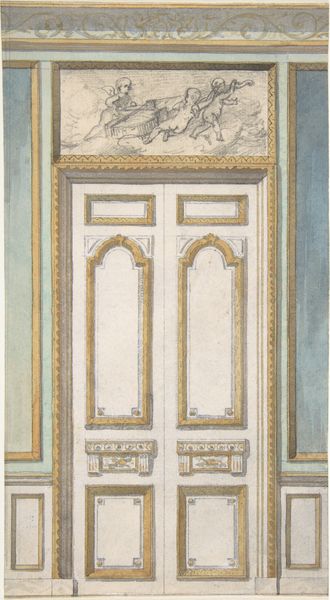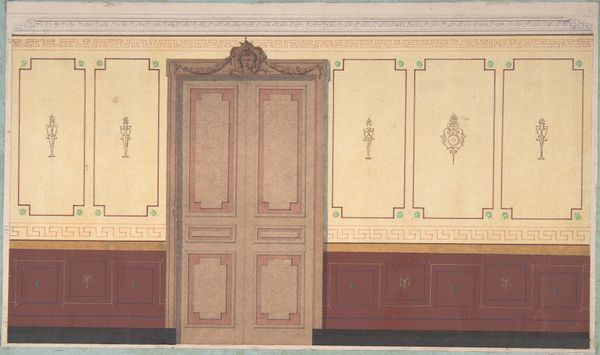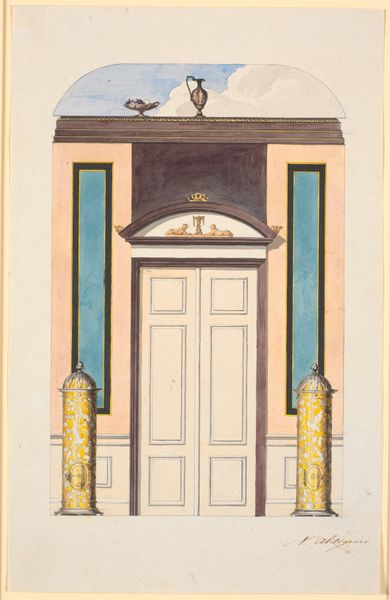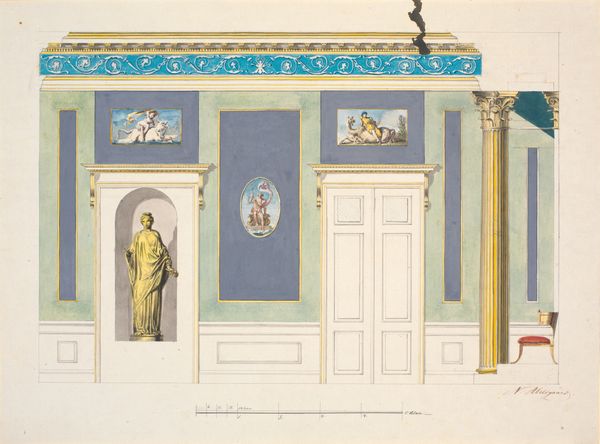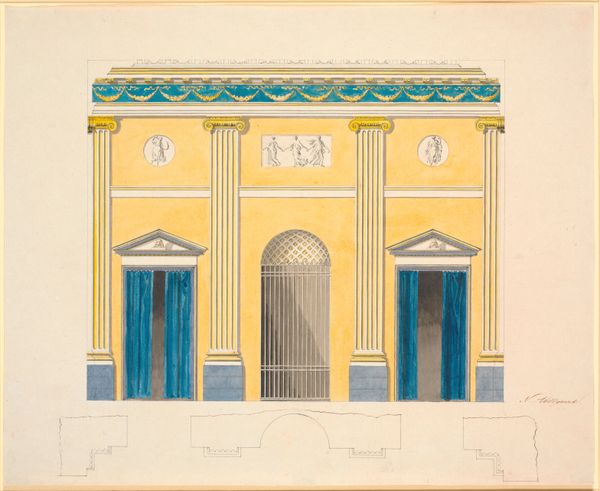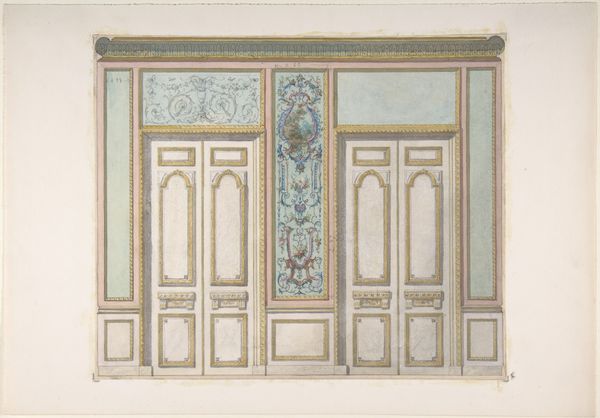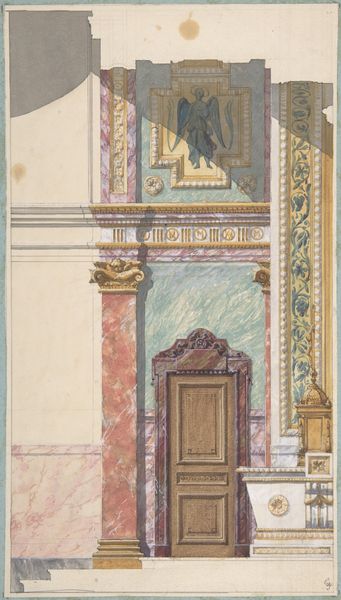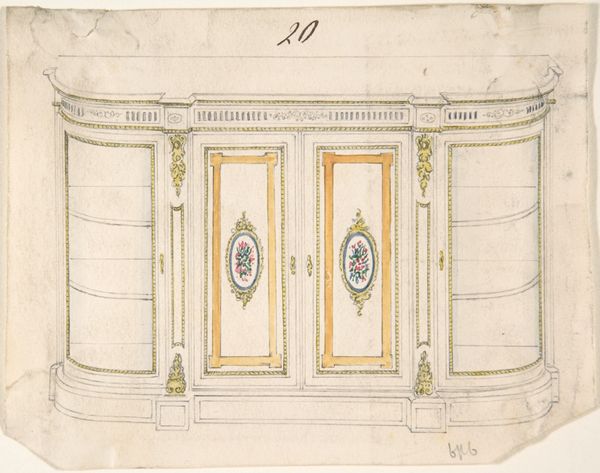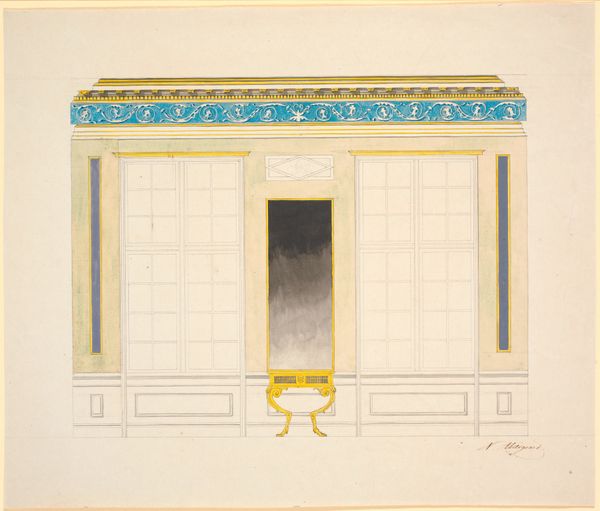
Udkast til dekoration af den indre langvæg i appartementssalen. c. 1794 1743 - 1809
0:00
0:00
drawing, tempera, architecture
#
drawing
#
neoclacissism
#
tempera
#
historic architecture
#
history-painting
#
architecture
Dimensions: 183 mm (height) x 412 mm (width) (bladmaal)
Editor: This is "Udkast til dekoration af den indre langvæg i appartementssalen," a design from around 1794 by Nicolai Abildgaard, using drawing and tempera. I am struck by how this rendering feels both grand and austere; there is clearly meant to be imposing architecture, yet the flat planes of pale blue feel surprisingly cold. How do you interpret this space? Curator: For me, this drawing offers a potent insight into the intersection of art, labor, and social structures during the late 18th century. Notice the proposed materials: tempera, a relatively accessible medium. Does this choice democratize artistic expression, or does it reinforce existing hierarchies of art production? Editor: That’s interesting! I hadn’t considered the material choices so deliberately. What do you mean by democratizing artistic expression? Curator: The availability and cost of tempera, compared to say oil paints, makes one consider access for a wider range of artists. Moreover, the decorative scheme itself suggests the luxury of the wealthy but is reliant on the labor of artisans and craftspeople to realize its vision. Who benefits from this type of design? What is being consumed? Editor: So you are saying the drawing almost obscures the labor that went into producing a space like this. Curator: Exactly! We often overlook the means of production in appreciating Neoclassical design like this. Consider, too, how the emphasis on clean lines and geometric forms masks the handiwork required to achieve such perceived perfection. What does the image then communicate about the lives of those whose labor made such spaces possible? Editor: It really highlights the social structures of the time. Looking at it now, it almost feels like a commentary on labor and wealth. Curator: Precisely! The tension between the ideals of Neoclassicism and the realities of its creation offers a powerful point of entry for understanding the material conditions of the late 18th century. Editor: I’ll definitely think differently about architectural drawings going forward, now that I understand how labor goes into making even a conceptual rendering like this.
Comments
No comments
Be the first to comment and join the conversation on the ultimate creative platform.


